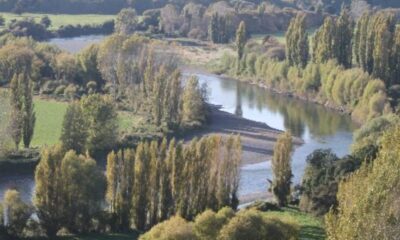Science
Kiwi Scientist’s Theory on Black Holes Validated After 60 Years

A groundbreaking theory proposed by New Zealand physicist Roy Kerr has been validated after nearly six decades, confirming the existence of black holes. Kerr’s work in the early 1960s provided a mathematical framework for understanding these enigmatic cosmic entities, which were still a topic of debate among scientists at the time. The term “black hole” itself was only introduced to the scientific lexicon in 1967, reflecting the uncertainty surrounding their existence.
The verification of Kerr’s theory marks a significant milestone in the field of physics. His solution to the equations of general relativity demonstrated how rotating black holes could exist, fundamentally changing the way scientists understand the universe. Prior to his work, the concept of black holes was largely theoretical, with many in the scientific community doubting their actual existence.
Impact on Modern Physics
Kerr’s discovery has had profound implications for modern astrophysics. The realization that black holes are not just theoretical constructs but actual celestial objects has opened new avenues of research. According to physicist Andrew Hamilton from the University of Colorado, “Kerr’s work laid the foundation for our understanding of how black holes interact with their surroundings and affect the structure of the universe.”
The implications of these findings extend beyond theoretical physics. The study of black holes contributes to our understanding of gravitational waves, cosmic radiation, and even the potential for time travel. As researchers continue to investigate the properties of black holes, they are likely to uncover new insights into the nature of space and time.
A Legacy of Innovation
Roy Kerr, born in 1934 in New Zealand, has spent a lifetime contributing to the field of mathematics and physics. His initial work on black holes was published in a paper in 1963, which outlined a solution to Einstein’s field equations, describing what would later be known as a Kerr black hole. This model describes a rotating black hole, which is more realistic than the earlier, non-rotating models.
Kerr’s theory gained traction over the years, but it wasn’t until the advent of advanced observational technologies, such as gravitational wave detectors and high-resolution telescopes, that his predictions could be tested in a meaningful way. Today, scientists are able to observe the effects of black holes on surrounding stars and gas clouds, providing strong evidence supporting Kerr’s original claims.
The scientific community continues to honor Kerr’s contributions. In 2020, he was awarded the prestigious Prime Minister’s Science Prize in New Zealand, recognizing his pivotal role in advancing our understanding of black holes and their significance in the cosmos. His work serves as a reminder of the importance of innovative thinking in science, especially when exploring the unknown.
As research into black holes progresses, it is clear that Roy Kerr’s legacy will endure, paving the way for future generations of scientists to build upon his groundbreaking findings. In a field where consensus is often elusive, Kerr’s theory stands as a testament to the power of curiosity and the pursuit of knowledge.
-

 World3 months ago
World3 months agoTest Your Knowledge: Take the Herald’s Afternoon Quiz Today
-

 Sports3 months ago
Sports3 months agoPM Faces Backlash from Fans During Netball Trophy Ceremony
-

 Lifestyle3 months ago
Lifestyle3 months agoDunedin Designers Win Top Award at Hokonui Fashion Event
-

 Sports3 months ago
Sports3 months agoLiam Lawson Launches New Era for Racing Bulls with Strong Start
-

 Lifestyle3 months ago
Lifestyle3 months agoDisney Fan Reveals Dress Code Tips for Park Visitors
-

 World4 months ago
World4 months agoCoalition Forms to Preserve Māori Wards in Hawke’s Bay
-

 Health3 months ago
Health3 months agoWalking Faster Offers Major Health Benefits for Older Adults
-

 Politics3 months ago
Politics3 months agoScots Rally with Humor and Music to Protest Trump’s Visit
-

 Top Stories4 months ago
Top Stories4 months agoUK and India Finalize Trade Deal to Boost Economic Ties
-

 Entertainment3 months ago
Entertainment3 months agoExperience the Excitement of ‘Chief of War’ in Oʻahu
-

 World4 months ago
World4 months agoHuntly Begins Water Pipe Flushing to Resolve Brown Water Issue
-

 Science4 months ago
Science4 months agoNew Interactive Map Reveals Wairarapa Valley’s Geological Secrets









